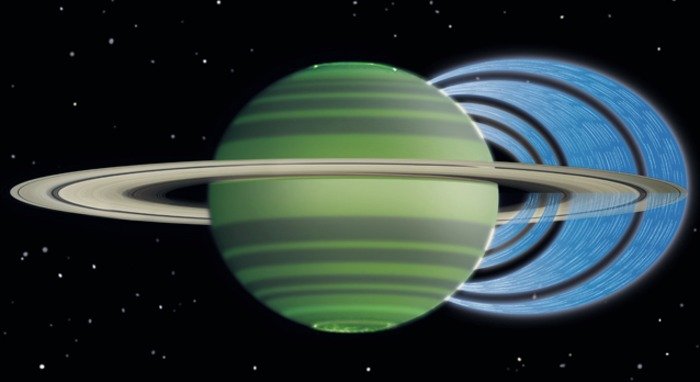This artist's concept illustrates how charged water particles flow into the Saturnian atmosphere from the planet's rings, causing a reduction in atmospheric brightness. Credit: NASA/JPL-Caltech/Space Science Institute/University of Leicester
PASADENA, Calif., April 10 (UPI) -- A U.S.-U.K. study is tracking rain on Saturn -- a cascade of charged water particles that flow into the planet's atmosphere from its rings, NASA says.
The study, involving observations funded by NASA and analysis led by the University of Leicester, has determined there is more of this cosmic "rainfall" affecting the atmosphere across larger areas of the planet than previously thought.
As the particles flow down from the rings they influence the composition and temperature structure of parts of Saturn's upper atmosphere, creating variations in the apparent brightness of regions there, researchers report in the study, published in the journal Nature.
"Saturn is the first planet to show significant interaction between its atmosphere and ring system," Leicester postgraduate researcher James O'Donoghue said. "The main effect of ring rain is that it acts to 'quench' the ionosphere of Saturn. In other words, this rain severely reduces the electron densities in regions in which it falls."
Researchers said the study would help in understanding the origin and evolution of Saturn's ring system and changes in the planet's atmosphere.
"It turns out that a major driver of Saturn's ionospheric environment and climate across vast reaches of the planet are ring particles located some 36,000 miles overhead," study co-author Kevin Baines of NASA's Jet Propulsion Laboratory in Pasadena, Calif., said. "The ring particles affect both what species of particles are in this part of the atmosphere and where it is warm or cool."















